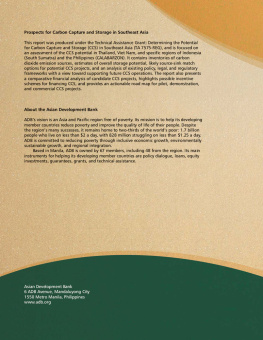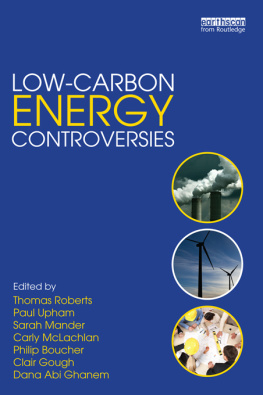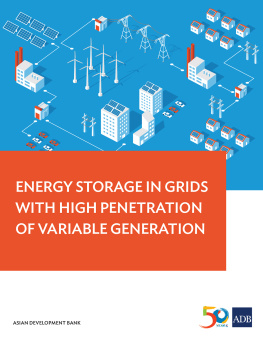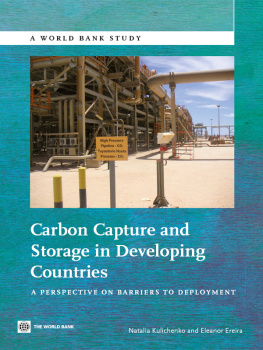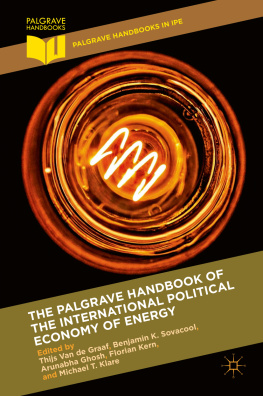
Prospects for
CARBON CAPTURE
and STORAGE
in SOUTHEAST ASIA
September 2013
2013 Asian Development Bank
All rights reserved. Published 2013.
Printed in the Philippines.
ISBN 978-92-9254-290-0 (Print), 978-92-9254-291-7 (PDF)
Publication Stock No. RPT135683-2
Cataloging-in-Publication Data
Asian Development Bank.
Prospects for carbon capture and storage in Southeast Asia.
Mandaluyong City, Philippines: Asian Development Bank, 2013.
1. Energy and environment. 2. Climate change mitigation. 3. Southeast Asia.
I. Asian Development Bank.
The views expressed in this publication are those of the authors and do not necessarily reflect the views and policies of the Asian Development Bank (ADB) or its Board of Governors or the governments they represent.
ADB does not guarantee the accuracy of the data included in this publication and accepts no responsibility for any consequence of their use.
By making any designation of or reference to a particular territory or geographic area, or by using the term country in this document, ADB does not intend to make any judgments as to the legal or other status of any territory or area.
ADB encourages printing or copying information exclusively for personal and noncommercial use with proper acknowledgment of ADB. Users are restricted from reselling, redistributing, or creating derivative works for commercial purposes without the express, written consent of ADB.
Note:
In this publication, $ refers to US dollars.
6 ADB Avenue, Mandaluyong City
1550 Metro Manila, Philippines
Tel +63 2 632 4444
Fax +63 2 636 2444
www.adb.org
For orders, please contact:
Public Information Center
Fax +63 2 636 2584
Contents
Tables and Figures |
Foreword |
Preface |
Acknowledgments |
Nomenclature |
Abbreviations |
Units and Conversion Factors |
Executive Summary |
1. Introduction |
1.1 Context |
1.2 Previous Studies |
1.3 Study Purpose and Scope |
1.4 Geographic Scope |
1.5 Report Organization |
2. Background |
2.1 Economy |
2.2 Energy |
2.3 Greenhouse Gas Emissions |
2.4 Overview of Carbon Capture and Storage Technology |
3. Capture Sources |
3.1 Data Inventory Methodology |
3.2 Emissions Inventory |
3.3 Capture-Ranking Methodology |
3.4 Source Ranking for Capture Suitability |
4. CO2 Storage Capacity |
4.1 Methodology |
4.2 Storage Estimate |
4.3 Ranking of Storage Options in Oil and Gas Fields |
5. SourceSink Matching |
5.1 Matching Methodology |
5.2 Indonesia (South Sumatra): SourceSink Combinations |
5.3 Philippines (CALABARZON): SourceSink Combinations |
5.4 Thailand: SourceSink Combinations |
5.5 Viet Nam: SourceSink Combinations |
5.6 Summary of SourceSink Options for Pilot Project |
6. Carbon Capture and Storage Cost Analysis |
6.1 Introduction |
6.2 Assumptions |
6.3 Results |
6.4 Sensitivities |
6.5 Financing |
7. Legal and Social Issues in Carbon Capture and Storage |
7.1 Legal and Regulatory Framework |
7.2 Public Perception and Social Acceptability of Carbon Capture and Storage |
8. Road Map for Carbon Capture and Storage Development |
8.1 Barriers and Drivers for Carbon Capture and Storage |
8.2 Carbon Capture and Storage Development Strategy |
8.3 Road Map for Carbon Capture and Storage |
8.4 Pilot Project Activities |
8.5 Implementing the Road Map: Carbon Capture and Storage Working Groups |
9. Conclusion and Recommendations |
9.1 Carbon Capture and Storage Opportunities Are Available |
9.2 Recommendations for Pilot Projects |
9.3 This Study Offers a Road Map for Carbon Capture and Storage Development, Starting with a Pilot Project |
9.4 Natural Gas Processing Offers the Best Entry Point |
9.5 CO2-Enhanced Oil Recovery, When Available, Represents a Good Financing Option for Initial Carbon Capture and Storage Projects |
9.6 Existing Legal and Regulatory Frameworks Could Be Expanded for Carbon Capture and Storage |
9.7 Communication and Engagement Strategies Must Play an Essential Role in Developing Carbon Capture and Storage |
9.8 An Enabling Environment Is Required for Carbon Capture and Storage Development |
9.9 Carbon Capture and Storage Working Groups Should Be Continued to Advance Development |
Appendixes |
1 Indonesia Executive Summary |
2 Philippines Executive Summary |
3 Thailand Executive Summary |
4 Viet Nam Executive Summary |
5 Scale of Carbon Capture and Storage Projects: Pilot vs. Demonstration vs. Commercial |
Bibliography |
Tables and Figures
Tables |
2.1 | Operational and Under-Construction Carbon Capture and Storage Plants |
3.1 | Weights for the Preferential Criteria |
3.2 | Top Three Ranked Capture Candidates by Country |
4.1 | Ranking Criteria for Oil and Gas Fields |
5.1 | Summary of Leading SourceSink Match Options for Pilot Project |
6.1 | Financial Assumptions (%) |
6.2 | Reference Technical Assumptions for Power Plants |
6.3 | Power Plant, Natural Gas Processing, and Fuel Costs by Country |
7.1 | Legal and Regulatory Framework for Carbon Capture and Storage |
8.1 | Illustrative Road Map for Carbon Capture and Storage Development |
Figures |
1.1 | Study Approach |
2.1 | Summary of Focus Countries |
2.2 | Primary Commercial Energy Supply in the Four Countries of the Study, 2010 |
2.3 | Carbon Capture and Storage Schematic Showing Oil and Gas Production, CO2 Utilization in Resource Production, and CO2 Storage |
Next page
